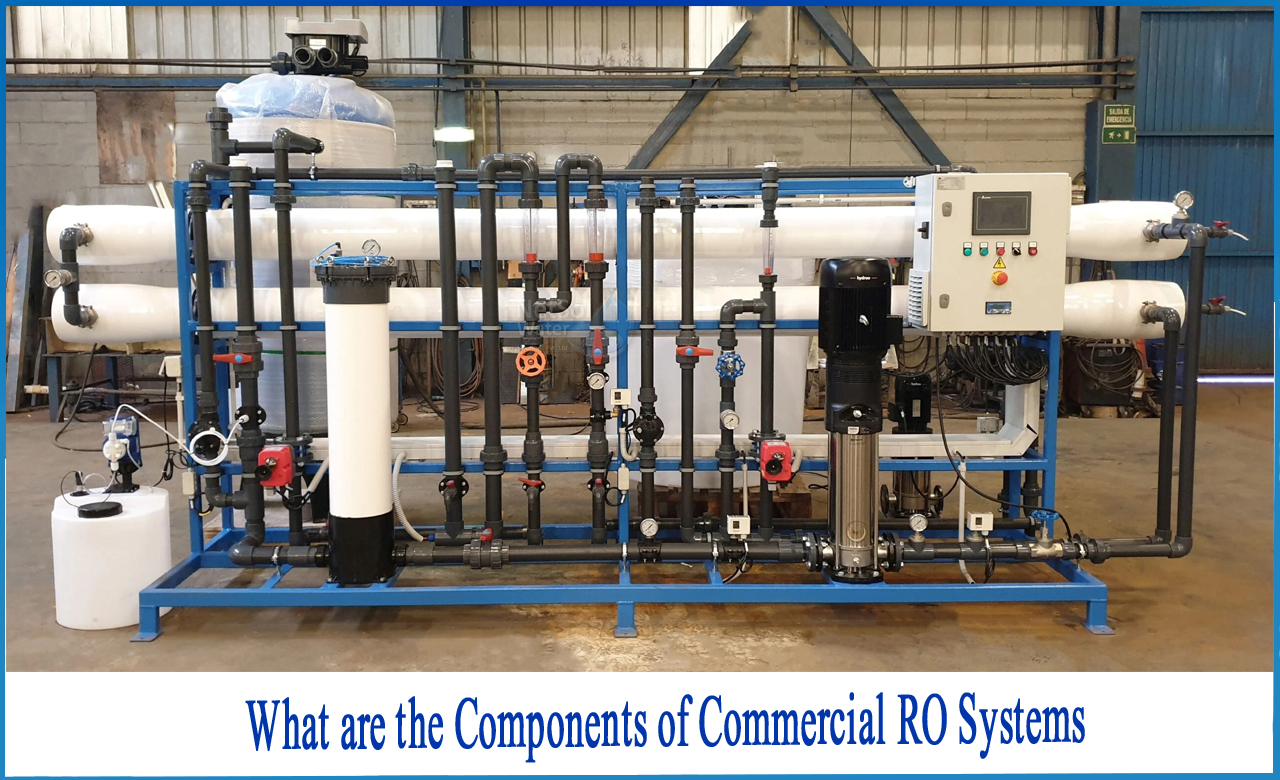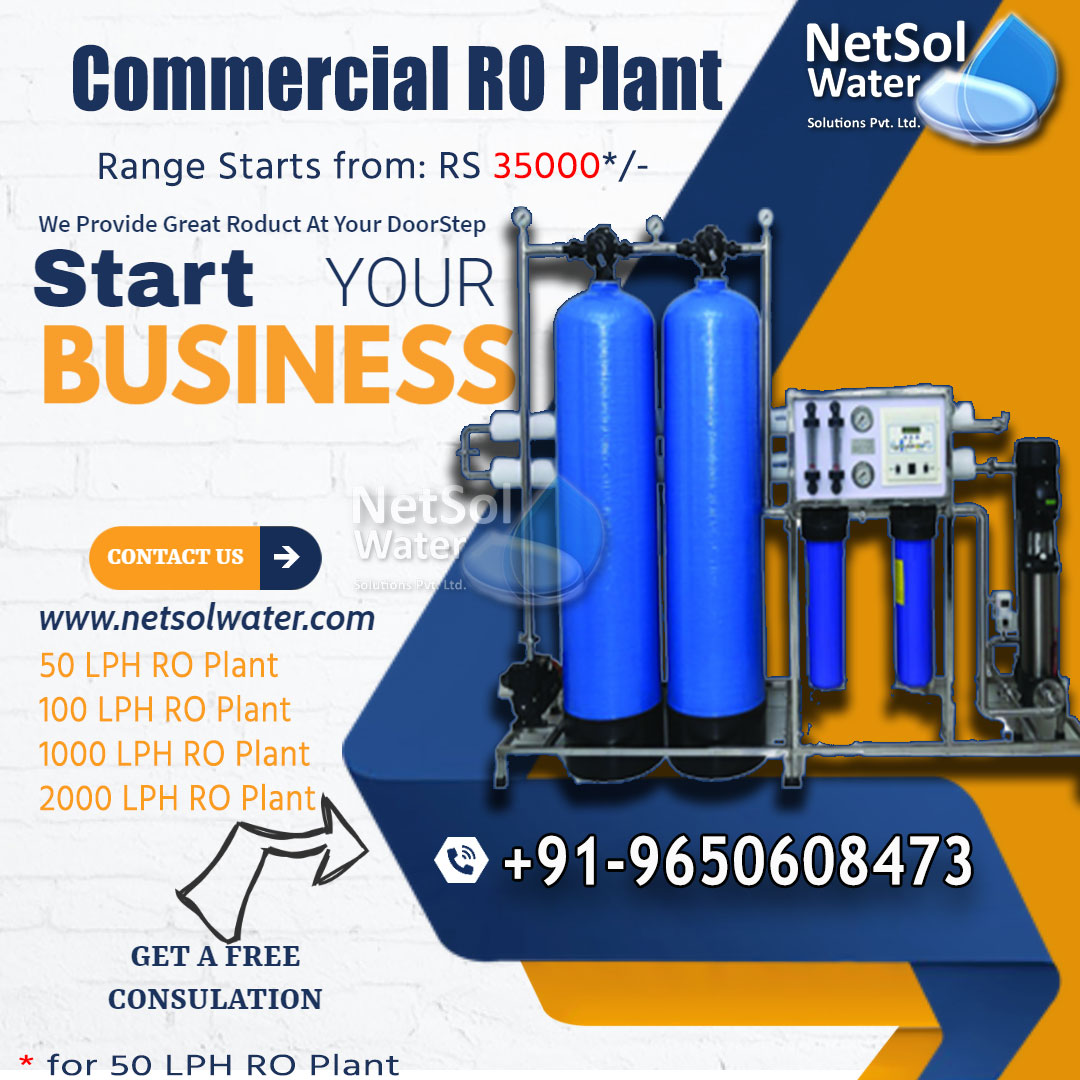What are the components of Commercial RO systems?
Over the last 50 years, reverse osmosis technology has become significantly more efficient. Innovative design, enhanced membrane materials, more efficient pumps, and improved pre-treatment processes, as well as antiscalant chemicals, are all contributing to this.
As we know that reverse osmosis has a variety of industrial and commercial uses, thus a perfect RO plant may be designed to meet specific needs. These adjustments are made based on the filtered water's specification.
Components of a Commercial RO system
Understanding the purpose of each of these components will assist you in comprehending how the system operates as well_
1: Cold water line valve: This valve is intended for use on a water supply source, as the name implies. It consists of a tube that is attached to the RO system's pre-filter. The tube is located on the pre-intake’s inlet.
2: Pre-filter: The water is filtered first by a pre-filter to remove dirt and debris.
3: Carbon Filter: The carbon block filter removes chlorine from the water, which can harm the RO membrane, as well as organic contaminants that create taste and odour problems.
4: Post filter:The post-filter will polish the product water and continue to eliminate the taste and odour constituents in it. Filtration is accomplished by the use of a carbon filter.
5: RO membrane:The RO Membrane is the most important component of a RO system. Its purpose is to eliminate impurities that may have an impact on water quality. The water that passes through the membrane is pumped into a storage tank. There are many different types of semi-permeable membranes, but the one with thin-film composite polyamide is the most widely employed in RO systems.
Large-diameter membranes, enhanced low-pressure membranes, and non-fouling membranes have all been popular in recent years. The use of these membranes improves the quality of water filtration while also lowering the cost of chemical additions.
6: RO Faucet:The faucet receives post-filtered water. Non-gap faucets are standard in most RO systems. Due to the abrasive nature of RO water, this faucet is coated with a plastic substance to prevent corrosion.
7:Automated Shut-off Valve: When the tank is filled with water, the Automated Shut-off Valve (ASV) assists in the automatic closing of the valve. It means that ASV changes the flow of water to the membrane while simultaneously preventing water from going to the drain. When the tank's pressure drops, the ASV will open.
8: Check valve: This one-way check valve prevents backflow from the storage tank, which may damage the membrane otherwise. The check valve is situated at the membrane cartridge's outflow end.
9: Flow restrictor:The reverse osmosis equipment item known as the flow restrictor helps manage the flow of water through the reverse osmosis membrane. The flow aids in maintaining the needed flow rate for optimum filtering. The performance of this is totally dependent on the reverse osmosis membrane's filtering capability. This element of the reverse osmosis system also aids in the maintenance of pressure on the membrane's entrance side. Excess water will go down the drain if this component is missing.
10: Drain Line:This pipe is utilized to dispose of contaminated impure water that has been discharged by the membrane.
11: Storage tank: The finished product water generated by the reverse osmosis system is stored in the storage tank. On average, it can contain around two to four gallons of water, with the capacity to carry more if a larger tank is necessary. The majority of storage tanks come in a conventional dimension of 15 inches tall by 12 inches wide, with an air-filled bladder that provides water pressure. When the tank is full, the water remains pressured. The tank is built of metal or entirely plastic and is lined with a non-corrosive liner.
Conclusion
Although simple in design, a reverse osmosis system requires some technical knowledge to correctly select the best equipment and features for the job. These systems are available in different configurations and can be ordered based on the amount of RO water needed for any application.
Netsol Water has the experience and expertise to help you find the best RO system for your intended application. We offer different capacities for Commercial and Industrial reverse osmosis equipment’s and can help you find a system that will be both cost effective and efficient to utilize.




